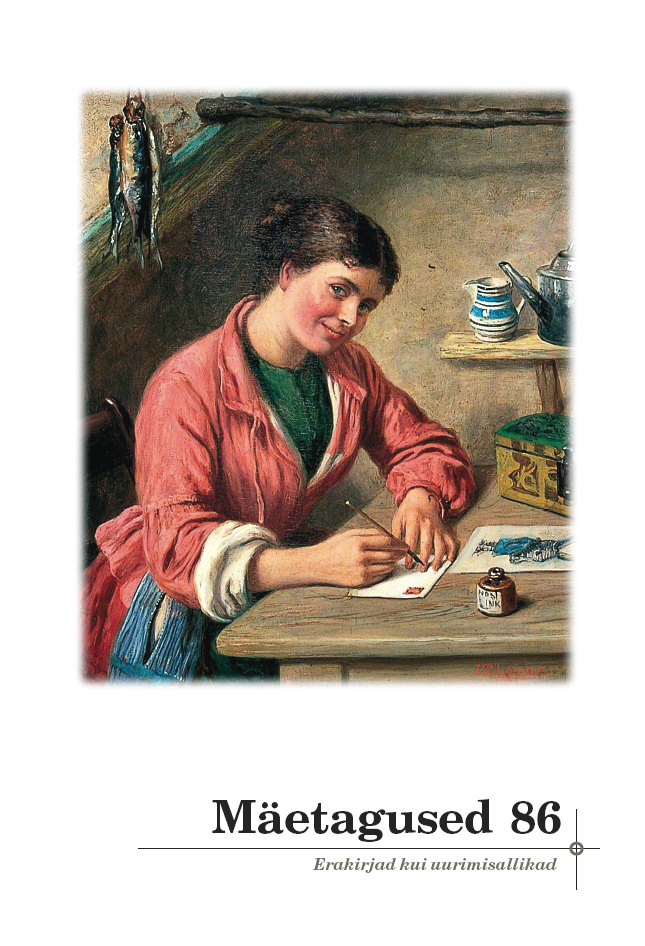“Ma palun saatke mulle üks erakiri…” Intersubjektiivsus Jaan Saalvergi kirjades Jakob Hurdale
“Please send me a letter…”: Intersubjectivity in the letters from Jaan Saalverk to Jakob Hurt
Author(s): Katre KikasSubject(s): Customs / Folklore, Cultural Anthropology / Ethnology, Culture and social structure
Published by: Eesti Kirjandusmuuseum
Keywords: epistolarity; intersubjectivity; Jaan Saalverk; Jakob Hurt; collecting of folklore;
Summary/Abstract: Letters are a means of communication with people who are far away. As such, letters are always intended to create intersubjective space common to the sender and receiver of the letter. The intersubjectivity can be created in different ways; for example, alluding to shared memories, using shared idioms or inserting direct addresses into the letters. Ideally the exchange of letters is symmetrical, but the reality tends to be nonideal – letters go missing, one partner is more passive and there can be a hierarchical relationship between the sender and the receiver. This asymmetricity, however, does not diminish the potential intersubjectivity of any particular letter. The article focuses on intersubjectivity in the letters sent by a farmer and folklore collector Jaan Saalverk (1874–1932) to Jakob Hurt. In 1888 Hurt started widespread folklore collecting campaigns; he published appeals in several newspapers and with the help of these hoped to build up a dense network of local collectors. The campaign lasted until Hurt’s death in 1907, and during this time about a thousand people stepped in. Saalverk participated in the campaign in 1896–1905 and he was one of the most prolific co-workers of Hurt from Jüri parish. As in most cases the organizers of the campaigns and the local collectors did not meet in person, the collecting campaigns can be considered as epistolary events – people who participated had to be able to use the postal system and know how to address other people in epistolary exchanges. In this article I do not cover everything that was sent by Saalverk to Hurt but, taking a narrower focus, study one special genre – the letters sent by him. Letters were not an obligatory part of collecting campaigns and there were collectors who never sent a letter to Hurt. However, most of the collectors wrote letters on several occasions. Some were added to collected materials and commented on them, some were sent in between collections; most of the letters dealt with collecting activity, but there were plenty of those that addressed other issues. The folklore collecting campaigns provide quite a special epistolary context. One aspect to be noted is social hierarchy – Hurt was a parson and had a university degree, while most of the collectors were farmers, that is, had considerably lower social standing. Besides, the communication took place on the borderline between private and public spheres – letters sent by collectors were private, but Hurt often quoted them in his public reports. This context of epistolary communication was marked by asymmetry – collectors always wrote more than Hurt. In his letters to Hurt, Saalverk touches upon several issues that can be found in the letters of other collectors as well. He writes about the importance of collecting for the nation and for himself, about his concerns over the value of his contribution and the prejudices that people from his area have towards folklore collecting. While he dwells on the importance of collecting, he seems to feel empowered by perceiving it as part of the modern world (opposed to drinking and fighting as non-modern ways to spend one’s free time); but considering the prejudices of local people he seems to be puzzled and not so confident anymore. A special trait of Saalverk’s letters is the devices he uses to create an intersubjective space between himself and Hurt. He does not use the most common device of folklore collectors – metaphorical language that Hurt employs in public texts about folklore collecting. Saalverk relies on direct addresses – in most of his letters, there is a plea for Hurt to send him a private letter and explain to him the importance of folklore collecting so that Saalverk could cite these ideas to refute the prejudices of local people. These pleas are connected to two different intersubjective spaces at once. On the one hand, they try to break the substantial asymmetry of the communication in this context, on the other hand Saalverk seems to hope that if he succeeds in creating real intersubjectivity between himself and Hurt, it would help him to solve problems he is having in the intersubjective space between himself and people around him.
Journal: Mäetagused. Hüperajakiri
- Issue Year: 2023
- Issue No: 86
- Page Range: 31-52
- Page Count: 22
- Language: Estonian

